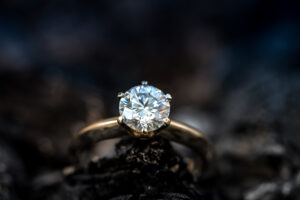
When you buy a diamond ring from a store, there are several important questions that you need to ask the seller. One of the things you need to inquire about the diamond ring is the source of the diamond. If the seller is unable to give you a straight answer and the diamond certificate is not mentioning the source, most probably the diamond in your hand is a blood diamond.
You don’t need to be reminded why blood diamonds are problematic and why governments across the world are trying to put an end to them. Even after so many rules and regulations, blood diamonds are still coming to the market.
As a buyer, you could do a lot by not choosing blood diamonds for your engagement rings. Instead of buying mined diamonds, there are other alternatives that ensure that you are not buying blood diamonds. Let’s take a look at some of them.
Lab-Grown Diamonds
Also known as man-made diamonds, lab-grown diamonds are increasingly popular among millennials around the globe. The main reason why they are considered the best diamond alternative is that they have similar optical, chemical, and physical properties to mined diamonds. The human eye cannot tell them apart.
If you are worried about the negative impacts of diamond mining and want an eco-friendly option, then lab-grown diamonds are the best choice. They have a very minimal carbon footprint and do not cause any negative environmental impacts.
White Sapphire
This is a cost-efficient diamond alternative and it has been used in engagement rings for centuries. There are other colored sapphires, but white sapphire is the less expensive option. If you are conscious about blood diamonds and do not have much to spend on lab diamonds, then you can opt for white sapphires for your engagement rings.
Moissanite

Moissanite is a diamond alternative that is created using silicon carbide in a lab. This diamond alternative was first discovered in the early 20th century. Moissanite gemstones are far less expensive than mined or lab-grown diamonds. In addition to that, they are very durable and have a good brilliance.
Cubic Zirconia
Like moissanite, cubic zirconia is also created in a laboratory setting using the crystalline form of zirconium dioxide. One of the biggest benefits of choosing cubic zirconia is that they are less expensive than mined diamonds. Cubic zirconia is only rated an 8.5 on the Mohs hardness scale when it comes to durability. As a result, they might get damaged over time and look hazy.
